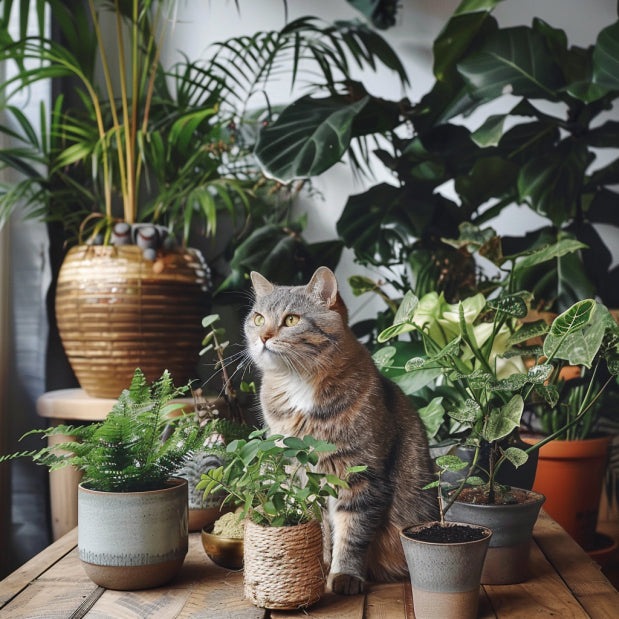How to Keep Cats Away from Your Houseplants: Safe and Effective Tips
In the jungle of our living rooms, where houseplants provide a lush backdrop and fresh air, our feline friends often embark on an adventure. It's not uncommon to find them nibbling on leaves, batting at dangling fronds, or even knocking pots off shelves. While these antics may seem cute or merely mischievous, they can pose real risks to both your plants and your pets. Fear not, plant enthusiasts and cat lovers! With a bit of understanding and some clever strategies, you can protect your indoor garden without resorting to drastic measures.

Understanding Cats' Attraction to Houseplants
Cats are inherently curious and are often drawn to houseplants for several reasons. The texture and movement of leaves can trigger their predatory instincts, leading them to paw at or chew on your plants. Some cats might find the dirt an appealing alternative to their litter box, while others might be attracted to the water in saucers beneath the pots. Recognizing these natural behaviors is the first step in deterring them.
The Risks to Both Cats and Plants
The cat-plant dynamic is not just a concern for the well-being of your flora. Many common houseplants are toxic to cats, posing a risk of poisoning if ingested. Conversely, cats can cause significant harm to your plants, from minor damage like broken stems and leaves to more severe issues like uprooting and killing them. The goal is to create a safe environment that satisfies your cat's curiosity without endangering either party.
Humane Strategies to Deter Cats from Houseplants
1. Natural Repellents: Cats dislike the smell of citrus, so placing orange or lemon peels around your plants can keep them at bay. Similarly, a solution of water and vinegar sprayed around the pot (not on the plant!) can act as a deterrent.
2. Physical Barriers: Protective cages or screens around your plants can prevent cats from reaching them. You can also use sticky tape or aluminum foil around pots, as cats dislike the feeling of these materials under their paws.
3. Behavioral Deterrents: Double-sided tape or commercially available pet-repellent mats placed around plants can discourage visits. A motion-activated spray that emits a puff of air or water when your cat approaches too closely can also be effective without causing harm.
Creative Alternatives to Satisfy Your Cat's Curiosity
Consider providing your cat with its own plant to explore, such as cat grass or a catnip plant. These safe alternatives can divert their attention away from your more delicate greenery. Additionally, ensuring your cat has plenty of toys and engaging activities can reduce their interest in your plants.
Tips for Cat-proofing Your Indoor Garden
1. Choose Cat-resistant Plants: Opt for plants that are less appealing or completely safe for cats, ensuring that if they do nibble, they won't be harmed.
2. Arrange Your Garden Strategically: Place sensitive plants on high shelves or in rooms where your cat is not allowed. Hanging planters can also be a beautiful and practical solution.
3. Regular Grooming: Keeping your cat's nails trimmed can minimize the damage they can do to your plants and themselves.
Frequently Asked Questions
Q: What plants are safe for cats? A: Spider plants, Boston ferns, and bamboo palms are among several cat-safe options that can beautify your home without the risk.
Q: How can I teach my cat to stay away from plants? A: Consistent, gentle discouragement (such as a firm "no" when they approach) combined with providing alternative distractions can help teach your cat to leave your plants alone.
Wrapping Up
Creating a harmonious living space for your houseplants and your cat requires understanding, patience, and a bit of creativity. By implementing the strategies outlined above, you can protect your greenery from curious paws without compromising the safety and happiness of your furry friend. Here's to a thriving indoor garden and a happy, healthy cat!

